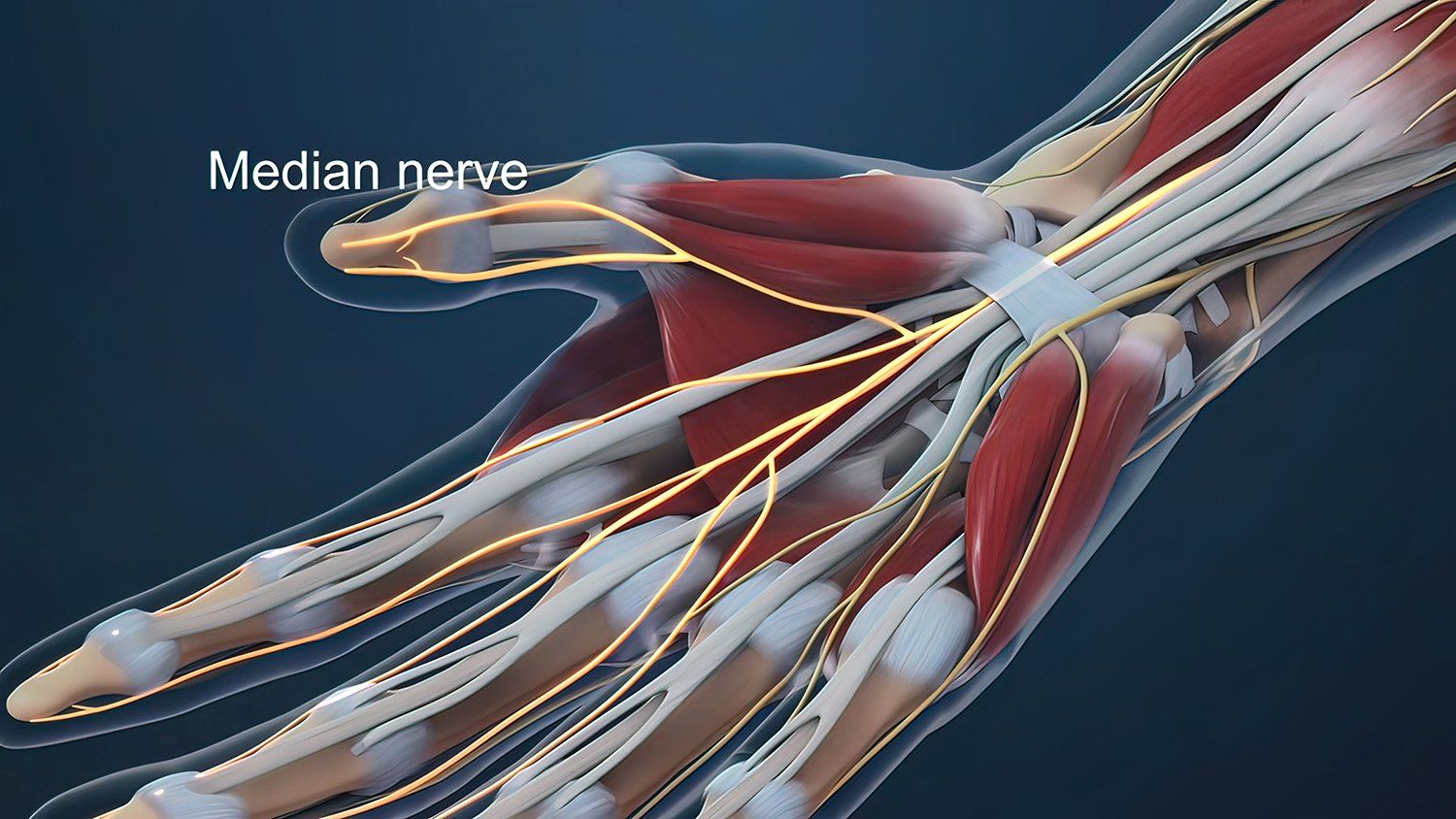Carpal Tunnel Surgery
Understanding Carpal Tunnel Syndrome and Its Treatments
The carpal tunnel is a narrow passageway in the wrist that is surrounded by bones and ligaments on the palm side of the hand.
Within the carpal tunnel you’ll find the median nerve – a nerve that is comprised of nerves from the cervical spine, which runs down the arm and forearm, through the carpal tunnel and into the hand. The median nerve gives motor signals to some of the muscles in the hand and sensory signals to the thumb, and index, middle and part of the ring fingers.
If the median nerve is compressed, symptoms can include numbness, tingling, and weakness in the hand. This is known as carpal tunnel syndrome.
Carpal Tunnel Syndrome Symptoms

- Weakness of grip
- Pain or numbness in one or both hands
- Pins and needles feeling in the fingers
- Swollen feeling in the fingers
- Burning or tingling in the fingers, especially the thumb and the index and middle fingers
- Pain or numbness that is worse at night and interrupts sleep
Carpal Tunnel Causes and Risk Factors
This is no one cause for the development of carpal tunnel syndrome. Carpal tunnel syndrome occurs when the median nerve becomes ischemic, or lacks oxygen due to limited blood flow, when pressure is increased in the carpal tunnel. This can occur due to a wide number of possible factors such as the following:
REPETITIVE USE
Repetitive use is perhaps one of the most common risk factors for the development of carpal tunnel syndrome. This includes frequent, repetitive, small movements with the hands, such as typing, and frequent, repetitive, grasping movements, as found in many sports, physical activities and various
occupations. The most common workplace factors include working with vibrating tools or on an assembly line that requires prolonged or repetitive flexing of the wrist as it can cause harmful pressure
on the median nerve.
MEDICAL CONDITIONS
Various joint and bone diseases can be a risk factor for the development of carpal tunnel syndrome, such as arthritis. In addition, changes in blood sugar levels, as often seen with type 2 diabetes, increase the risk of nerve damage, including damage to the median nerve. We also see patients who develop carpal tunnel syndrome specifically during pregnancy.
INJURY
Injuries can also spur the development of carpal tunnel syndrome, including anything that causes swelling or inflammation to the area such as strain, sprain, or dislocated or broken wrist.
LIFESTYLE
In addition to repetitive use, there are several lifestyle factors that can increase the chances of carpal tunnel syndrome. Obesity is a risk factor as is a patient’s genetic inclination to develop the syndrome.
Regardless of cause, women are generally more likely to develop carpal tunnel than men, possibly because the carpal tunnel area is relatively smaller in women than in men. Plus, fluid retention, which is common during pregnancy and menopause, may increase the pressure within the carpal tunnel, irritating the median nerve. Carpal tunnel syndrome associated with pregnancy generally improves after the baby is born.
Non-surgical methods to release carpal tunnel pressure
For those facing carpal tunnel discomfort, there are a few non-surgical lifestyle changes that can help release pressure.
Wear a wrist brace while sleeping to keep the wrist in a neutral position, thus increasing volume
in the carpal tunnel and decreasing pressure on the nerve
Learn healthy computer habits and modify any hand activity that might be causing compression
Increase overall physical activity and consider weight loss if appropriate
Talk to your doctor about addressing inflammation with a cortisone shot
Perform hand and wrist stretching exercises
Stop using tobacco of any kind
What Is Carpal Tunnel Surgery?
Carpal tunnel surgery is a special kind of hand surgery that involves releasing the pressure within the carpal tunnel so that the median nerve regains normal blood flow and function. This is done during a short procedure in which a small incision is made in the palm and the ligament that forms the roof of the carpal tunnel is divided, thus releasing the pressure within the carpal tunnel.
If conservative, non-surgical treatment does not provide sufficient or sustained relief from symptoms, or if the median nerve dysfunction is severe enough to cause damage to muscles in the thumb, carpal tunnel surgery may the best next step in treatment.
Recovery from Carpal Tunnel Surgery
Immediately after carpal tunnel surgery, patients are given a soft dressing and allowed to move the fingers and wrist as can be tolerated. Movement is encouraged to prevent stiffness. The sutures are usually removed 10 to 14 days following surgery.
While the recovery time will vary based on patient and the severity of the case, patients typically recover in 2 to 4 weeks and are back to normal activities roughly 4 weeks after surgery. We recommend avoiding heavy lifting for the first 4 weeks after surgery.
Tired of struggling with the discomfort of carpal tunnel syndrome? Call Northeast Georgia Plastic Surgery & Northeast Georgia Hand today to schedule a carpal tunnel surgery consultation. We’d love to help you get back to your life free of pain and limitations.

